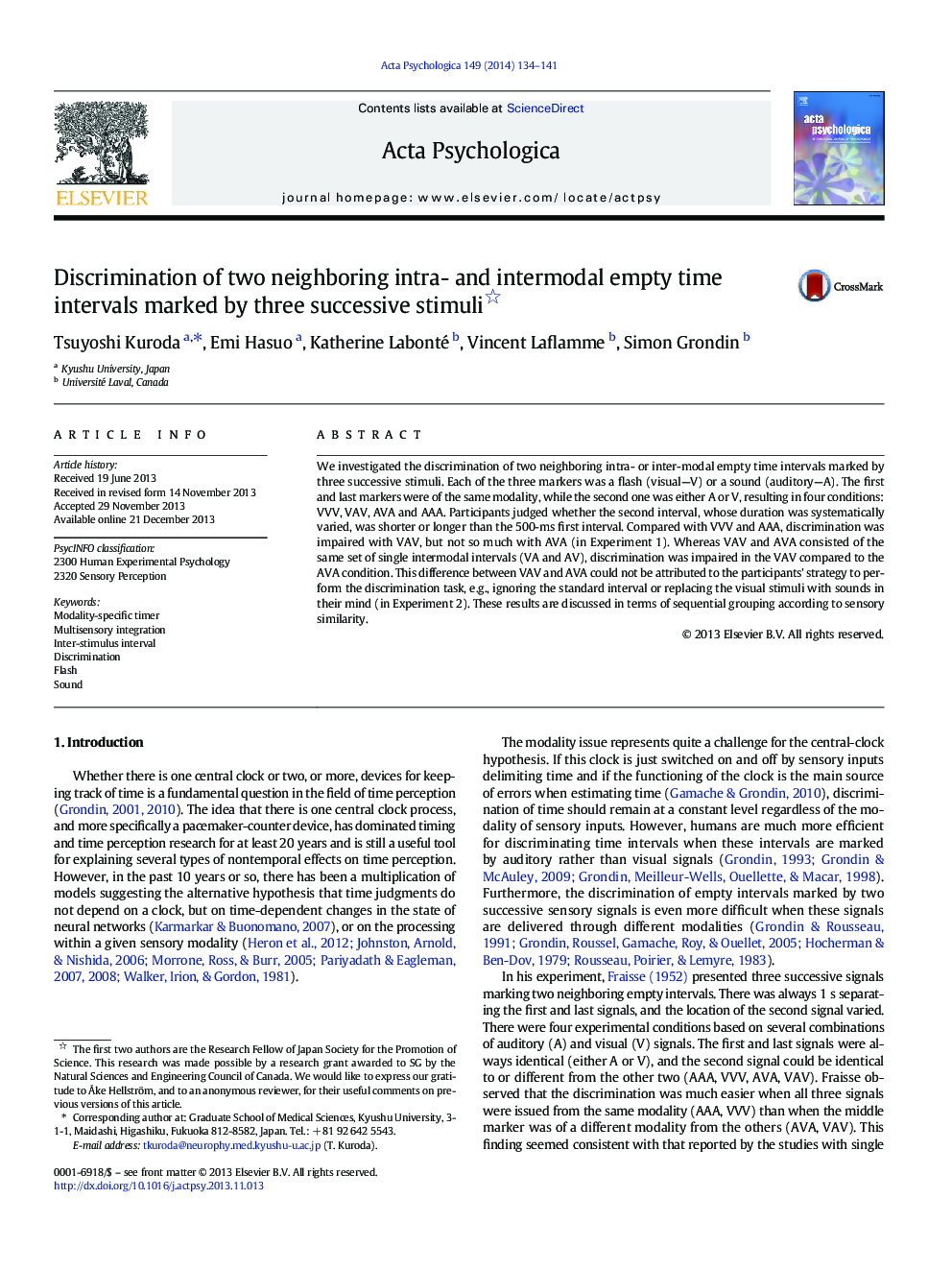| Article ID | Journal | Published Year | Pages | File Type |
|---|---|---|---|---|
| 7277705 | Acta Psychologica | 2014 | 8 Pages |
Abstract
We investigated the discrimination of two neighboring intra- or inter-modal empty time intervals marked by three successive stimuli. Each of the three markers was a flash (visual-V) or a sound (auditory-A). The first and last markers were of the same modality, while the second one was either A or V, resulting in four conditions: VVV, VAV, AVA and AAA. Participants judged whether the second interval, whose duration was systematically varied, was shorter or longer than the 500-ms first interval. Compared with VVV and AAA, discrimination was impaired with VAV, but not so much with AVA (in Experiment 1). Whereas VAV and AVA consisted of the same set of single intermodal intervals (VA and AV), discrimination was impaired in the VAV compared to the AVA condition. This difference between VAV and AVA could not be attributed to the participants' strategy to perform the discrimination task, e.g., ignoring the standard interval or replacing the visual stimuli with sounds in their mind (in Experiment 2). These results are discussed in terms of sequential grouping according to sensory similarity.
Keywords
Related Topics
Life Sciences
Neuroscience
Cognitive Neuroscience
Authors
Tsuyoshi Kuroda, Emi Hasuo, Katherine Labonté, Vincent Laflamme, Simon Grondin,
